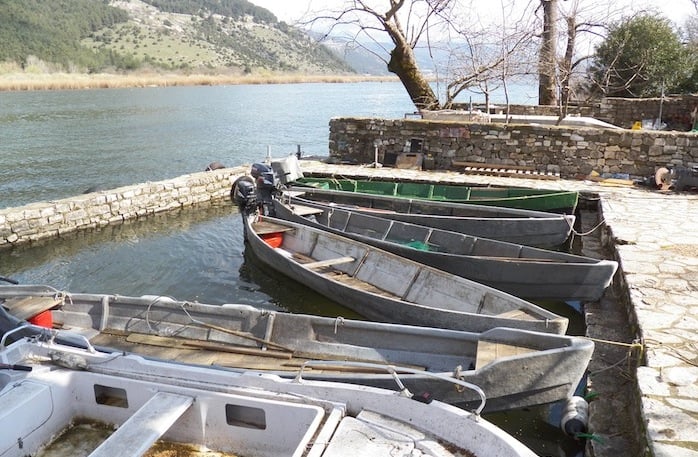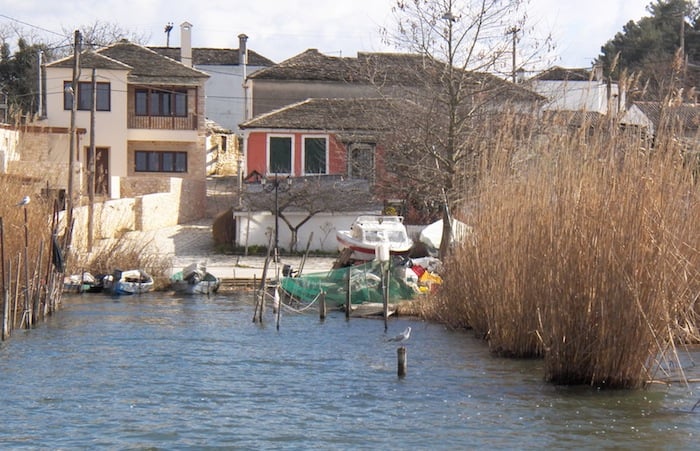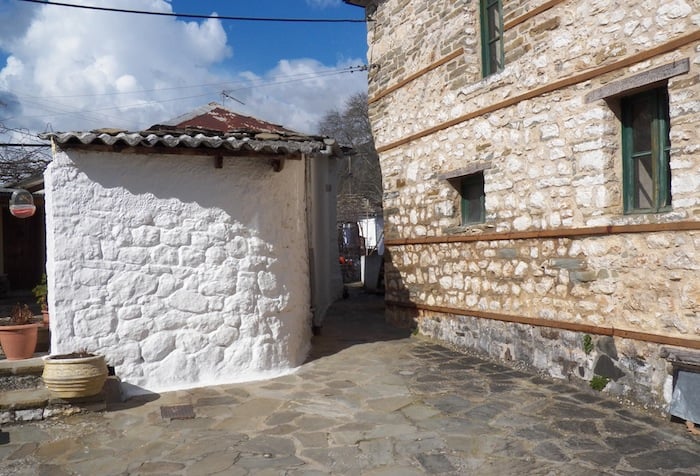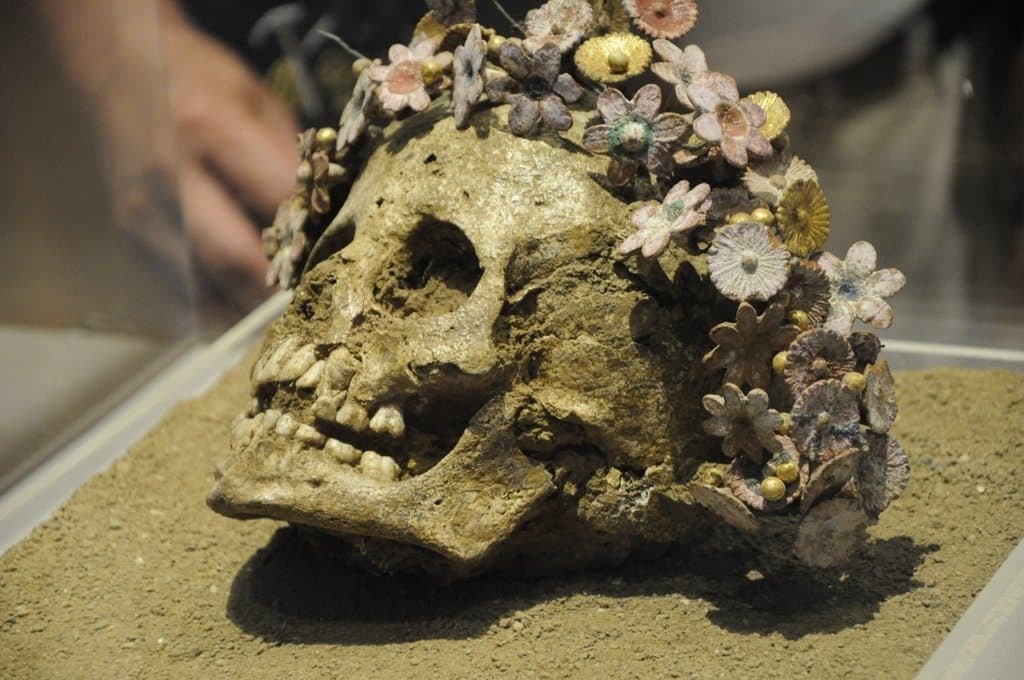
One of the very few inhabited lake islands in Europe is in Greece. The island of Ioannina Lake holds a unique record as it is the only inhabited island of its size in the world without a name.
Often referred to simply as “The Island” (To Nisi), or the “Ioannina Island,” this nameless gem embodies an understated charm. It stands in the middle of a lake that is steeped in legends.
The island in the Lake of Ioannina is relatively small, but packed with history and natural beauty. Its land area is 0.675 square kilometers (0.261 sq mi). Its biggest length is 800 meters and its biggest width is 500 meters. It covers an area of approximately 200 acres.
Despite its modest size, only about a quarter of the island is taken up by dwellings and businesses, with the rest forming a beautiful nature reserve of pines and cypresses. Its western side is noted as being marshy.
The island’s story is inextricably linked to the ancient waters that surround it. Its striking settlement, characterized by traditional Epirot architecture with stone houses and slate roofs, nestles amidst lush greenery of pines and cypresses.
As your boat gracefully glides through the reeds, approaching from behind the lake’s edge, you’ll glimpse the charming houses with their courtyards stretching to the water’s edge, evoking an image from a bygone era. Even the small, triangular wooden fishing boats, resembling ancient pirogues, speak to a deep-rooted connection with the lake, designed by fishermen to navigate its reedy shores with ease.

History of the island in Ioannina Lake
Archaeological discoveries showed that the first settlement was built on the island during the Copper Age.
It was dubbed “Kiafir Antas” by the Ottoman conquerors, meaning “Island of the Infidels,” a testament to its enduring Greek Orthodox identity. Its spiritual heart beats within the ancient monasteries that have stood for centuries, monuments of Orthodoxy that elevate the island to a sacred space.
Following the fall of Constantinople to the Franks in the early 13th century, aristocratic families sought refuge in Epirus, and it was on the western side of the island that the Philanthropines and Stratigopoulos families founded the catholicon of two monasteries dedicated to Saint Nicholas around the late 13th century.
Over the 15th and 16th centuries, other significant monasteries followed, including Saint John the Baptist, the Transfiguration of the Savior, Eleousa, Saint Panteleimon, and Prophet Elias, solidifying the island’s role as a major monastic community with a profound educational contribution.
While the 13th-century references are strong, some legends also speak of early inhabitants descending from the mountains or even immigrants arriving from Laconian Mani.

The Ali Pasha legacy
Perhaps one of the most dramatic chapters in the island’s history centers around Ali Pasha, the formidable Ottoman ruler. It was within a cell of the Monastery of Saint Panteleimon that Ali Pasha met his tragic end in 1822, after the Sultan’s troops besieged and plundered the island in the years 1820-1822.
Today, visitors can immerse themselves in this pivotal period at the Ali Pasha and Revolutionary Period Museum, housed within the monastery, featuring unique exhibits that bring this turbulent era to life.
A sweet welcome and local delights
Stepping onto the island, visitors are met with a “sweet” welcome, the Athens-Macedonia News Agency (AMNA) says in a recent report. The uphill cobblestone path leading to the square is lined with local businesses offering traditional sweets. Your gaze will then naturally fall upon the glistening creations of Ioannina’s renowned silversmiths displayed in shop windows.
The island’s tavernas beckon with local delicacies, inviting you to savor unique flavors like frog legs, spaghetti with crayfish, and freshly grilled fish from the lake.
The settlement itself is a traditional preserved settlement, ensuring its authentic character remains intact. The stone-built houses boast whitewashed, flower-filled courtyards, creating an idyllic atmosphere. With no cars on the island, residents who own vehicles park them on the opposite shore of Ndrabandova, a mere 200 meters away, and reach their homes by small private boats, further contributing to the island’s tranquil charm.

The parish church of the Assumption of the Virgin Mary stands proudly near the square, with the small church of Agios Eleftherios just a little further, adding to the island’s spiritual ambiance.
Just a swift 10-minute boat ride separates this serene island from the bustling city of Ioannina. Boats under the watchful gaze of the Castle regularly ferry islanders and visitors back and forth from morning to night, making this enchanting escape easily accessible.
The Island in Lake Pamvotida is more than just a destination; it’s an experience that transports you through time, immersing you in the rich history, spiritual traditions, and serene beauty of Epirus.


